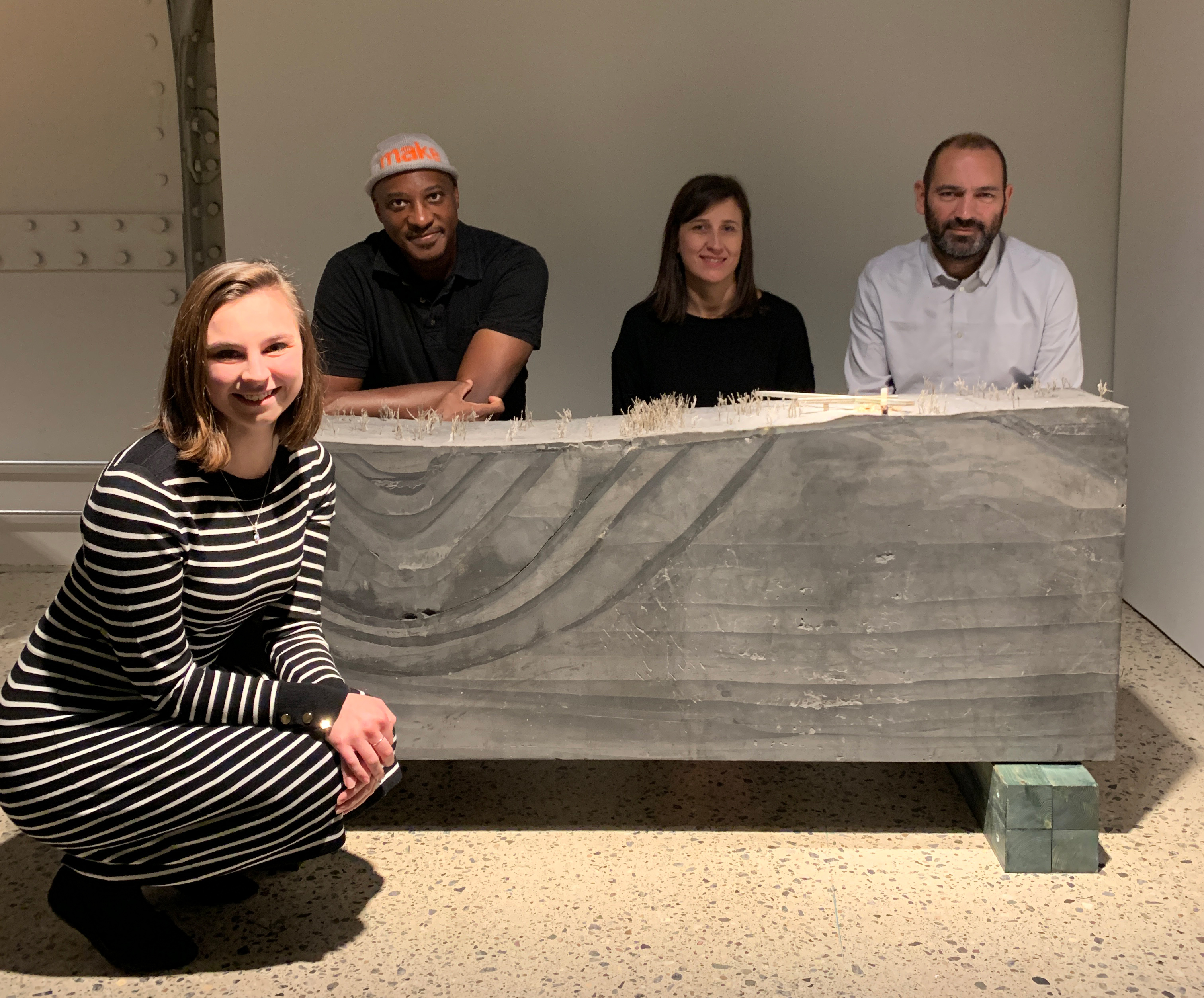Stuckeman School research and design on display in Oslo Architecture Triennale
UNIVERSITY PARK, Pa. – The interdisciplinary research and design of a project by several Stuckeman School faculty members and a recent alumna is currently on display at the 2019 Oslo Architecture Triennale (OAT) in Norway through November 24.
“Scorched Earth” is a proposal by Miranda Esposito, a 2018 alumna of the architecture program at Penn State; Marc Miller, assistant professor in the Department of Landscape Architecture; Laia Celma, assistant professor in the Department of Architecture; and Pep Avilés, assistant professor in the Department of Architecture and the Stuckeman Career Development Professor in Design that pays tribute to the once-thriving Pennsylvania mining town of Centralia, which has been burning underground since a coal mine fire erupted there in 1962.
Once home to more than 2,000 residents, by 2018 the population of Centralia had dwindled to just seven. The proposal, which began as Esposito’s thesis project, is a memorial to all that was lost in the evacuation and abandonment of the city in the months and years after the fire, which is anticipated to burn for another 50 to 200 years.
Funding for Scorched Earth was provided by the H. Campbell and Eleanor R. Stuckeman Fund for Collaborative Design Research at Penn State. Additional funding came from the Program for the Internationalization of Spanish Culture of Acción Cultural Española and the Museum of Architecture in Oslo.
The Penn State team traveled to Oslo for the installation and opening of the exhibit on Sept. 26 and was one of just three teams from U.S. universities invited to exhibit its work.
Held every third autumn at the Oslo School of Architecture and Design over a period of approximately ten weeks, OAT attracts citizens and users of the city, decision makers, professionals and international guests. It is known as one of the world’s prominent arenas for dissemination and discussion of architectural and urban challenges. The theme of this year’s event is “Enough: The Architecture of Degrowth.”

 Study Architecture
Study Architecture  ProPEL
ProPEL 
